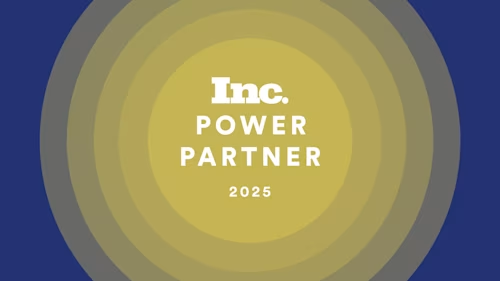
Contract AI: What It Is and What It Isn’t
Contract artificial intelligence (AI) is an essential tool that enhances performance in the most competitive businesses.
Table of contents

Business is inherently competitive. Even on a level playing field, ideas and talent can only take you so far. To compete—to truly compete—you need to have the right tools. In this blog series, we’ll examine one essential tool that enhances performance in the most competitive businesses: contract artificial intelligence (AI).
What is Contract AI?
To drive value and compete with contract AI, we have to start with a common understanding of what contract AI is and what it is not. At its core, contract AI is the application of text-based machine learning on contracts, leveraging everything from algorithms to rules-based text searches. Rather than delve into the abundant scholarly literature on the mathematical and technical underpinnings of contract AI, we’ll explore the application of contract AI today for businesses.
Contract AI takes the unstructured linguistic information in contracts and transforms it into structured data. What does that mean? Let’s look at a real-world example. Historically, to understand which agreements were impacted by regulatory changes in privacy laws, a team of people would read an organization’s contracts from top to bottom looking for a set of specific issues in order to determine which agreements would require remediation. But with contract AI, a business can run all its agreements through a contract AI solution to automatically identify which agreements are subject to regulatory oversight and which are not. This is accomplished by breaking those agreements into groups based on key clauses that speak to those specific issues like:
governing law
confidential information
personally identifiable information
data breach notice
cooperation with regulators
These are just a few of many key data points whose presence or absence can be identified, extracted, and logically structured to automatically answer the question, “Do we need to do something about this change in the law?”
For a set of 100 potentially relevant agreements, leveraging contract AI is probably not the right value proposition. But when scale comes into play (5,000 agreements or more), contract AI is the optimal solution for volume-driven analysis. Organizations no longer have to choose between quality, speed, and cost when structuring agreement data. Instead, contract AI amplifies legal and contract teams’ ability to identify and analyze agreement-based risk so that they can best exercise their skilled judgment faster and with better data. With contract AI, these teams can operate more consistently, efficiently, and effectively to mitigate risk and drive a comprehensive legal strategy for the organization.
Contract AI does not replace people
We should also note that neither people nor contract AI are perfect. But unlike human review alone, contract AI does not generate different outputs when faced with the same inputs. Contract AI does not vary its output because it is tired, distracted, stressed, or overworked. Moreover, contract AI is verifiable. It is not a black box, but rather an engine that produces statistically measurable results. In so doing, organizations can configure the performance of contract AI to align with their standards and the value of the legal and contract teams’ experience.
Simply put, contract AI does not replace people; it amplifies their performance. This concept of performance enhancement is the best way to drive adoption of contract AI. The successful adoption of contract AI depends on the proper combination of technology, process, and personnel. Indeed, demystifying contract AI is the best step towards adoption and return on investment.
Common myths about contract AI
Now that we’ve laid out the concept of contract AI, we’ll dispel the two most common myths around adoption. First, contract AI is not some sort of superhuman replacement for legal and contract teams. Unlike in the movies, contract AI is not necessarily learning unchecked on its own. It will not “read” agreements in a data room and say, “You should do this deal and pay this particular price.” Don’t laugh; I’ve encountered that expectation before. But contract AI will get the legal and contract teams through that analysis faster than any other method. Moreover, it will produce dynamic reporting on the necessary elements needed by the legal and contract teams to make high-level business decisions.
So, on one end, it’s easy to have unrealistic expectations around what contract AI can do to replace human analysis and judgement. On the other end, there can be trepidation that contract AI may not identify every possible issue in a document. Cutting to the chase, contract AI will only identify the items it is trained to identify. Today more than ever before, contract AI is capable of analyzing myriad issues “out of the box.” Even so, legal and contract teams confront the challenge of unknown unknowns or “black swans” every day. That experience enables them to continually optimize their use of contract AI, ensuring that relevant information is not omitted from their analysis. At bottom, contract AI is enhanced performance, not performance replacement.
Businesses use contract AI today to answer complex questions
To emphasize the power of performance enhancement, we’ll share an example of a customer applying contract AI to determine transferability rights for agreements related to an internal reorganization effort. An aviation company wanted to divest an entity and restructure under a new related entity. To make this happen, they would need to review more than 20,000 agreements to determine if they had to provide notice or get permission from counterparties to do so. Moreover, they were concerned that such a transfer of agreements could give certain counterparties the right to terminate their agreements. Confronted with this challenge, the aviation company had to balance the time, cost, and efficacy of manual review (reading 20,000 agreements to answer 20 questions on each document) against the possibilities of leveraging contract AI. With the direct involvement of the company’s general counsel, contract AI allowed them to: (1) cull the universe of relevant documents down to 3,500 agreements (82% level of effort savings); (2) automate the assessment of 20 relevant data points (400,000 coding decisions); and eliminate 99.5% of all manual coding decisions. To the point, contract AI delivered this result in less than 5 business days. That is the power of contract AI in a competitive landscape.
What is contract AI? It is the marriage of human analysis and judgment with the most powerful, statistically verifiable tool to enhance the performance of legal and contract teams. It’s the state of competition today. And it’s only the starting line for competitive legal and contract teams to deliver value with contract AI in the future.
Related posts
Docusign IAM is the agreement platform your business needs




